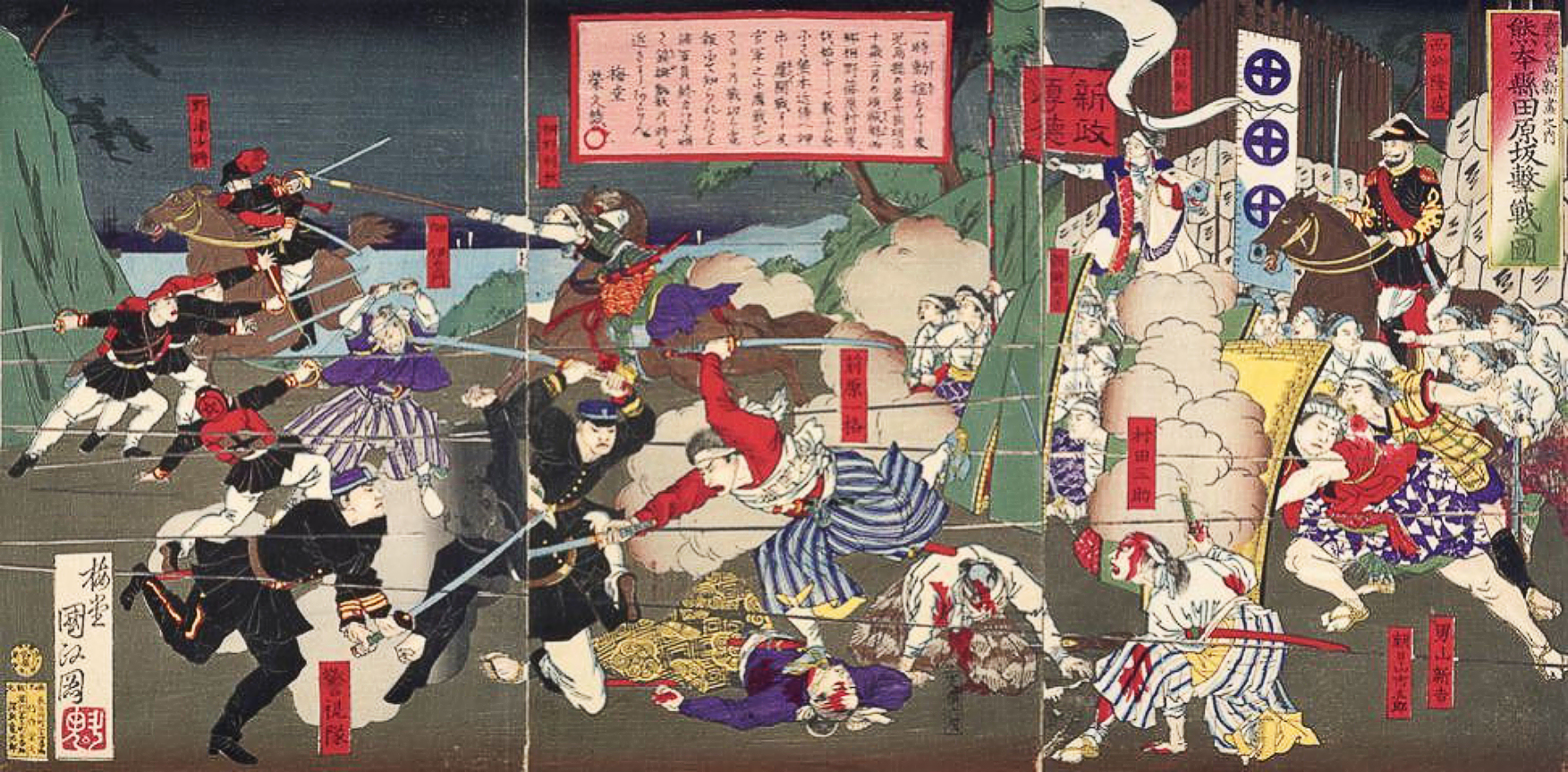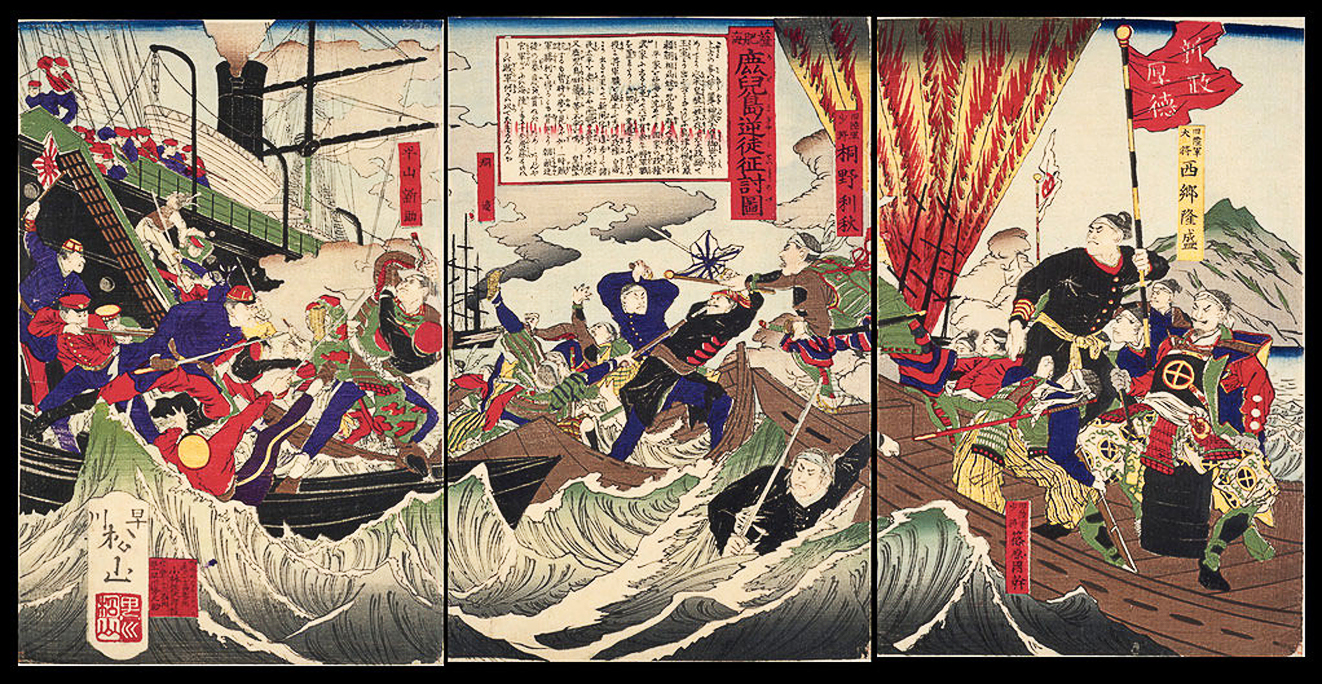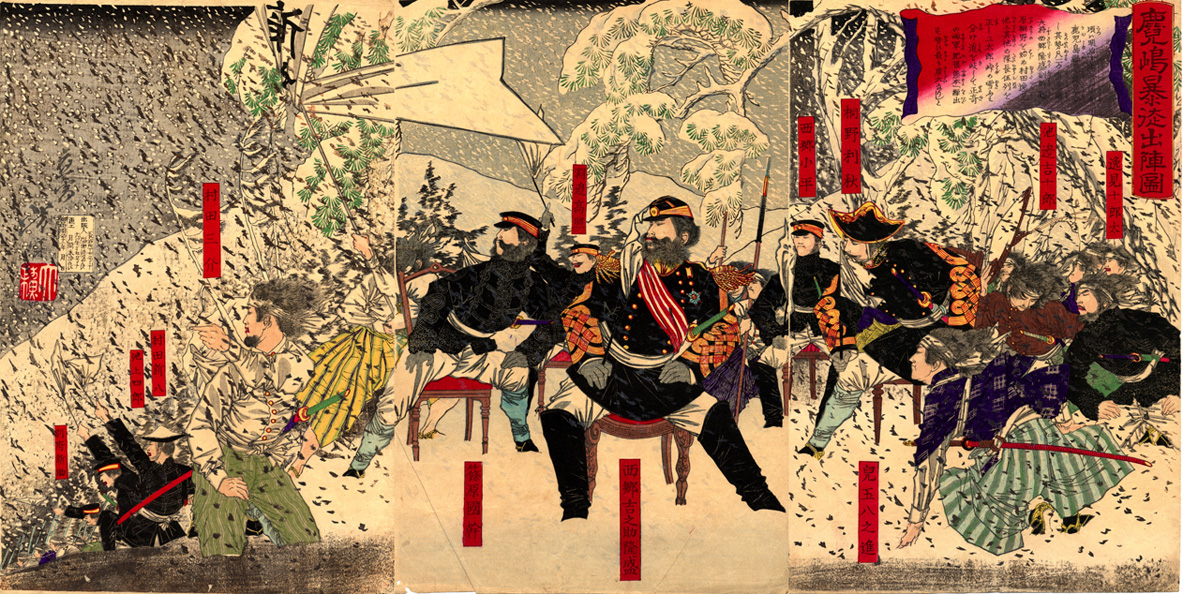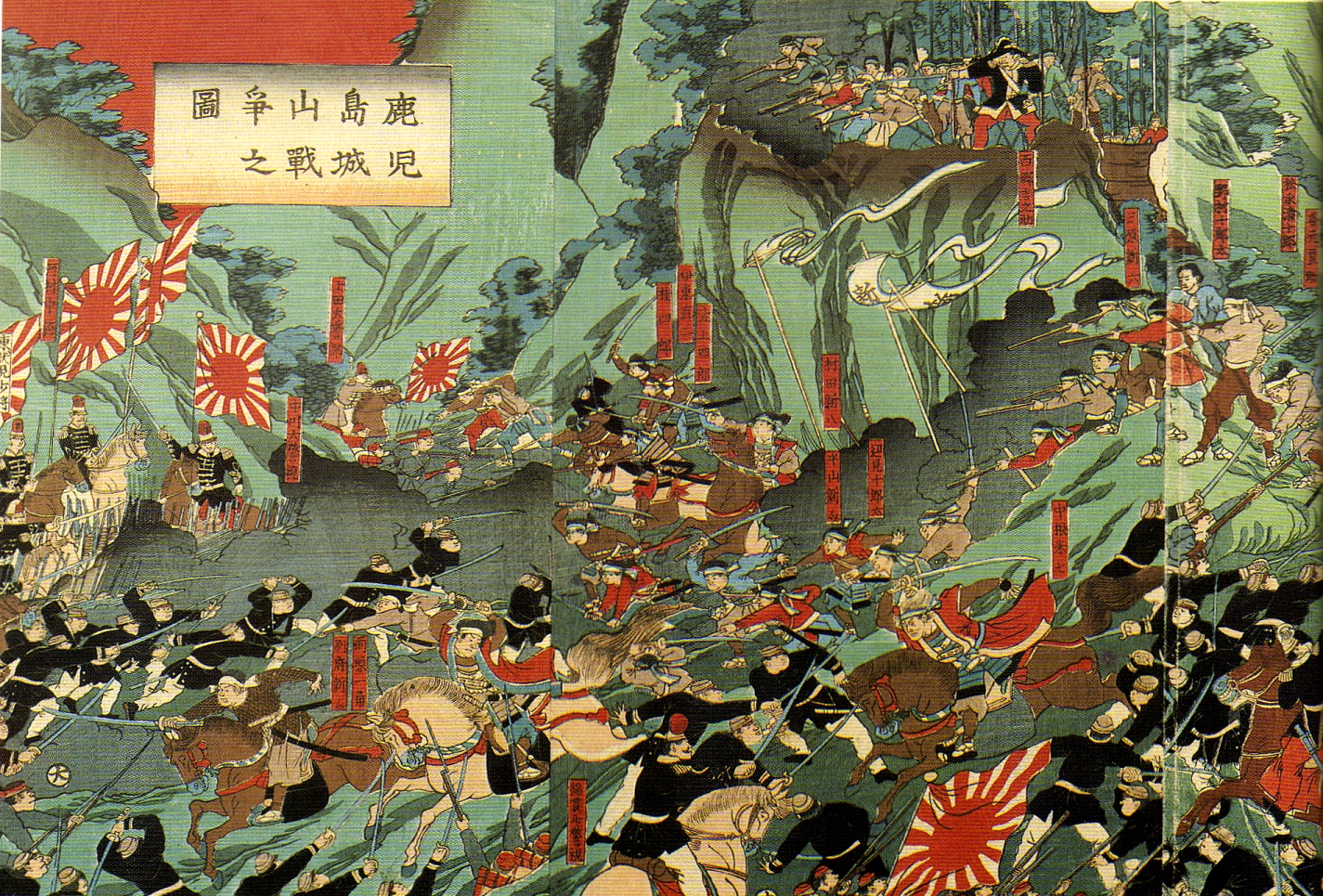Satsuma Rebellion, 1877
Enlarge text Shrink textThe Satsuma Rebellion, also known as the Seinan War (Japanese: 西南戦争, Hepburn: Seinan Sensō, lit. 'Southwestern War'), was a revolt of disaffected samurai against the new imperial government of the Empire of Japan, nine years into the Meiji era. Its name comes from the Satsuma Domain, which had been influential in the Restoration and became home to unemployed samurai after military reforms rendered their status obsolete. The rebellion lasted from 29 January until 24 September of 1877, when it was decisively crushed, and its leader, Saigō Takamori, was shot and mortally wounded. Saigō's rebellion was the last and most serious of a series of armed uprisings against the new government of the Empire of Japan, the predecessor state to modern Japan. The rebellion was very expensive for the government, which forced it to make numerous monetary reforms including leaving the gold standard. The conflict effectively ended the samurai class and ushered in modern warfare fought by conscript soldiers instead of military nobles. It is also the most recent civil war fought in Japan.
Read more on Wikipedia >
 Topic
Topic













